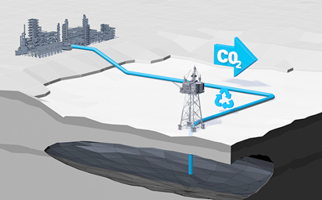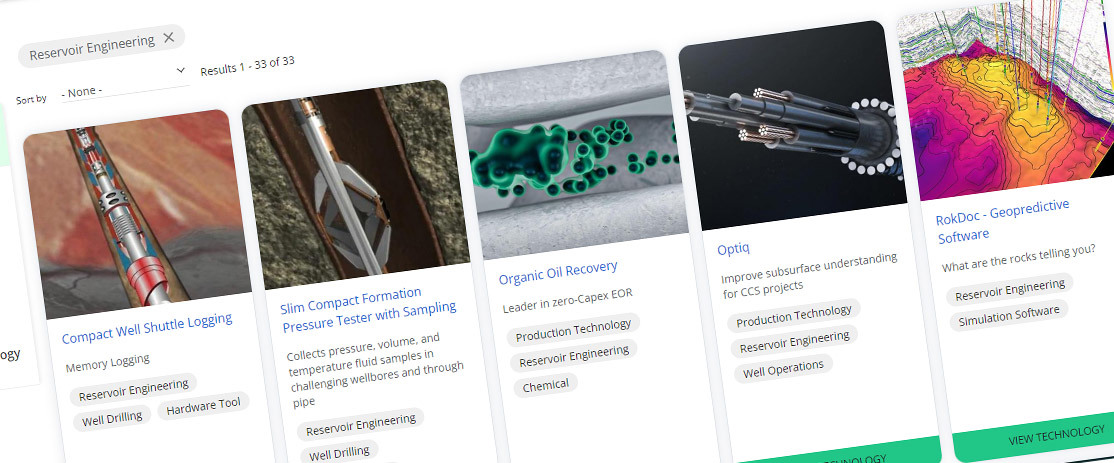Well P&A continues to show a steady increase in reported numbers of technologies in 2025.
Innovation is driven by both vendors and operators and includes through-tubing cement bond logging, barrier placement and downhole wireless sensing.
There has been progress in introducing novel barrier materials and deployment techniques, and tools for removing control lines from downhole gauges.
A number of technologies have been reported including:
- A wellhead connection system designed to quickly connect/disconnect using hydraulics.
- A novel cutting tool for dual tubing strings and chrome tubing.
- A new single-lift well-to-well transfer system which eliminates the use of a wireline mast and enhances safety.
- Use of a lower cost intervention vessel which can lower P&A costs when compared to the use of LWIVs and standard rigs.
Well plugging and abandonment technologies
- Significant growth in number of technologies in this category, including a 76% increase in intervention equipment technology.
- Key areas of innovation cover alternative barrier materials and their placement, and intervention equipment able to reduce time and cost of P&A operations.
- Interest in P&A innovation appears concentrated with 14 operators who have reported technologies in their plans.
Well P&A is a field of active innovation with 46% of technologies reported in operators’ plans noting recent introduction or technology still under development.
The majority of technologies are provided and deployed by vendors and suppliers, in 12% of cases operators take an active role in the development or customisation of the solutions for their assets’ needs.
Readiness definitions: Early development (TRL 1-4), late development/pilot (TRL 5-7), early commercialisation (TRL 8), proven (TRL 9)
This is an area with a number of tools developed to assess the well bore, downhole leak paths, and logging cement tops and cement condition (including multi string applications). There are several emerging technologies including multi-string logging for barrier verification and assessing cement quality behind the production casing. Emerging technology includes through-tubing assessment of cement condition.
- Pipe deployed ultrasonic logging: Casing integrity and cement mapping (CICM) logging. A pipe deployed ultrasonic logging system provided by vendor. It is the first commercial use of the CICM tool by this operator. The tool is essentially an USIT mounted into a LWD BHA.
- TRL 9 commercially available
- TRL 9 commercially available
- Gas leak path acoustic tool: For acoustic detection of gas leak paths downhole.
- TRL 9 commercially available
- TRL 9 commercially available
- Multi-string isolation logging tool: To allow cement tops to be logged in multiple casing strings.
- TRL 9 commercially available
- TRL 9 commercially available
- Multi-string logging tool: To assess cement through multiple strings by through-tubing logging.
- TRL 8 early commercialisation
- Through-tubing interpretation: Production tubing adds one more barrier to the assessment of cement layers, hampering the analysis and changing the characteristics of the acoustic signal.
- TRL1-4 early development (NEW)
- Acoustic, gamma ray and electro magnetism through tubing logging: Multi-string logging for barrier verification being tested in wells.
- TRL 5-7 late development/pilot
- Alternative cement logging tool: Tool for through tubing logging to assess cement quality behind the production casing.
- TRL 5-7 late development/pilot
There are several examples of conductor cutting techniques reported this year with one operator confirming deployment of a combined hydraulic cutting tool with a pinning tool to allow combined cutting and pinning operations. No new technologies this year.
- Hydraulic severance of conductor and casing strings: Using hydraulic conductor cutter.
- TRL 9 proven technologies
Control Cutter: Conductor decom package includes all equipment and calculations required to recover the wellhead and conductors. Multi-string casing is sectioned into the required lengths prior to lifting, handling and preparing the sections for backloading. Cutting and pinning tooling is incorporated into a single interface frame/table.

- Abrasive water jet cutting tool: For conductor recovery.
- TRL 9 proven technologies
- Wellhead cutting tool: Controls all cutting parameters, including verification of a completed cut. The system is based on a diamond wire technique removing the need for compressed air, and combined with a smaller spread, requires with fewer personnel on board.
- TRL 1-4 early development
Operators are using deployable technologies such as through tubing abandonment, ongoing field trialling of non-alloy barriers, fusion based alloy plugs, and tools for rigless abandonment using lower cost vessels. An operator plans to use self-healing cement to incorporate downhole gauge cables which prevent effective plug setting. New this year is barrier material providing an annular seal, horizontal well sealing, and for failed bridge plug/cement repairs, and through-tubing cement bond logging to confirm top of cement for casing strings.
- Barrier material: Providing annular seal, horizontal well sealing, and for failed bridge plug/cement repair.
- TRL 9 commercially available (NEW)
- TRL 9 commercially available (NEW)
- Multi-operator collaboration: Accelerating the rate in which technology is developed, tested and piloted for well decommissioning.
- TRL 9 commercially available (NEW)
- TRL 9 commercially available (NEW)
NZTC multi-operator collaboration accelerating the rate in which technology is developed, tested and piloted for well decommissioning:
- Alternative barrier materials
- Inspection and verification
- Enabling technologies
Link to technology example:
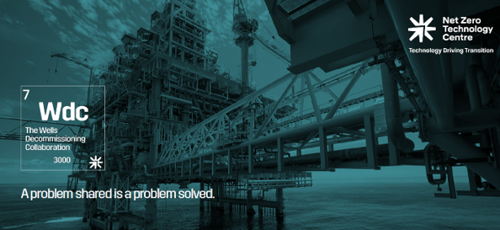
- Agitator tool: Wireline run tool set in completion string excites tubing while pumping to enable effective 360 degree placement of cement.
- TRL 9 commercially available
- TRL 9 commercially available
- Self-healing cement: Can be used to incorporate gauge cables in the abandonment barrier.
- TRL 9 commercially available
- TRL 9 commercially available
- Non-alloy barriers for LWIV subsea well P&A: Viscous gel plug as base for setting tubing and annular cement barrier in subsea well allowing LWIV only abandonment.
- TRL 9 commercially available
- TRL 9 commercially available
- Through-tubing cement bond logging: To confirm top of cement for casing strings and/or presence of squeezing shales for future abandonment campaign planning.
- TRL 8 early commercialisation (NEW)
- TRL 8 early commercialisation (NEW)
- Fusion based alloy through tubing abandonment: Multiple operators considering various fusion base alloy barriers.
- TRL 8 early commercialisation
- Bismuth plug: Surface controllable bismuth plug used as an alternative to cement material. Potential utilisation to allow offline environmental caps to be placed without a rig.
- TRL 5-7 late development/pilot
- TRL 5-7 late development/pilot
- Shale barrier predictions: Pseudo DCM analysis to predict abandonment barriers from conventional log data.
- TRL 5-7 late development/pilot
Operators are considering light well intervention vessels for subsea open-water abandonments and subsea shutoff devices for open-water tubing retrieval, and a magnetic swarf recovery unit. Emerging technology includes novel approaches for breaking the cement bonds on casing strings. New this year is a swarf handling system.
- Swarf handling system: Section milling casing swarf removal.
- TRL 9 commercially available
- TRL 9 commercially available
- LWIV subsea well abandonment: Open hole 300' tubing cut, recovery and layout on seabed for subsequent uplift by CSV allows LWIV only subsea well abandonment.
- TRL 9 commercially available
- TRL 9 commercially available
- Subsea open water P&A: Through-tubing P&A with an LWIV. Includes recovery of tubing hanger and surface tubing to allow setting of environmental plug.
- TRL 9 commercially available
- TRL 9 commercially available
- Casing recovery system: Uses pressure and rotation to manipulate the casing string, breaking down the bond between cement and casing making it easier to remove casing quickly and efficiently. Can reduce operation time from 25 days to 12.5 days.
- TRL 8 early commercialisation
- TRL 8 early commercialisation
- Jarring technology: Combines high overpull forces with high frequency vibration to improve stuck-object extraction force.
- TRL 8 early commercialisation
HydroVolve Hammer: Combined pulling and impact forces to break settled solids and shear cement bonds. Combining high overpull forces with high frequency vibration to deliver stuck-object extraction force to remove stuck casing.
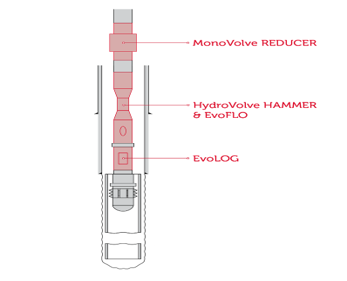
- Subsea shutoff device (SSD) and volume control system (VCS): SSD allows the well to be secured for open water tubing retrieval. VCS allows for early detection of volume/pressure changes in the well when retrieving tubing in open water.
- TRL 9 commercially available
- TRL 9 commercially available
- Explosive severance tool: Technology to simultaneously sever all necessary casings to allow recovery of subsea wellheads. An explosive charge is deployed internally within the casing(s) to be severed, severing up to four strings of fully cemented concentric casings, from 9-5/8” to 30” x 1.5”.
- TRL 9 commercially available
- Casing cement breaker: Mechanical device to manipulate a casing string to break the cement bond between casing and cement or barite and facilitate deep casing recovery.
- TRL 5-7 late development/pilot
Included this year are innovative solutions for improving well access for interventions, low-cost platform workover rigs/modular drilling rig systems, rigs specifically configured for well P&A, riserless P&A systems, an inside casing status visualisation technology, subsea vessel-based fishing tools and a casing expander tool. New this year are a hydraulic wellhead connector, and a dual string and chrome tubing cutter. Emerging technology is an alternative to wireline masts.
- Hydraulic wellhead connector: Makes rigging up and down quicker, easier and safer and is designed to quickly connect the pressure control string to the wellhead using hydraulics whilst removing human intervention and reducing the risk of injury.
- TRL 9 commercially available (NEW)
- TRL 9 commercially available (NEW)
- Tool cutter: Deployed on wells during 2024 to cut dual tubing strings and chrome tubing that historically has been extremely difficult to unscrew during retrieval.
- TRL 9 commercially available (NEW)
- TRL 9 commercially available (NEW)
- Vessel based fishing tools: Use of vessel based subsea technology to remove debris to allow abandonment.
- TRL 9 commercially available
- TRL 9 commercially available
- Casing expansion tool: Method for creating base in annuli to assist with fluid segregation to improve quality of cement jobs/stop fluids swapping.
- TRL 9 commercially available
- TRL 9 commercially available
- Rig configured specifically for well P&A: To deliver transformational subsea well P&A with rig designed for specific purpose (multiple solutions by vendors).
- TRL 9 commercially available
- TRL 9 commercially available
- Riserless P&A system: Capable of conducting full riserless P&A, including reservoir and intermediate abandonment.
- TRL 9 commercially available
Deployed from a dynamically positioned monohull vessel, the Riserless Well Intervention System (RWIS) provides a reliable solution for carrying out cost-effective intervention and abandonment operations on all types of subsea wells. The RWIS is modular in design, allowing the system to be tailored to specific job requirements.
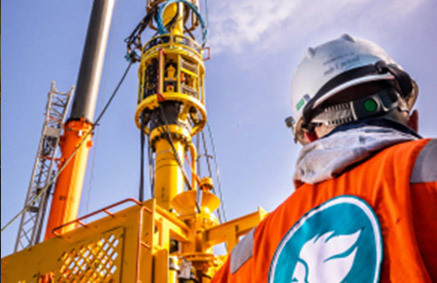
- Single-lift well-to-well transfers: Eliminates use of a wireline mast and working under suspended loads. Also reduces POB.
- TRL 5-7 late development/pilot (NEW)

